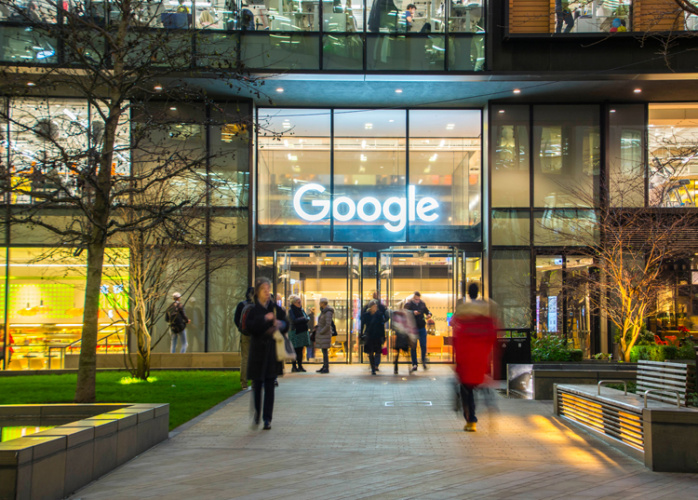Designers share their top tips for finding work in uncertain times
The past year has presented many challenges for those working in the creative industry, as widespread cuts resulted in less work and job losses.
Many designers are having difficulty finding work, or staying employed, due to uncertainty over lockdown. A recent Design Week poll revealed that 48% of designers are worried about what the final few months of 2020 might bring.
Pip Jamieson, founder and CEO of The Dots, a creative professional network, told Design Week that the company is now seeing a "rise in work" after enduring a difficult period.
While some companies may be cautious about hiring new employees, designers have the opportunity to find another job or to transition to a different industry.
This article features top designers from digital, branding and retail who share their top tips for finding work.
What are the employment trends within the design industry?

Jamieson claims that the tech industry is "thriving." Jamieson says there is a "monumental increase" in the tech industry, which includes user experience (UX), interface (UI), product design (design thinking), and even copywriting.
Designers should not limit their work to tech roles. Jamieson says that there is a rise of creative jobs at tech companies which means that skills can also be transferred. You can still work at Google advertising, or at Depop fashion, for instance.
There has been a renewed appreciation for tech but it is not the only area of design that has seen a rise in interest. While animation is a highly-demanded skill, she admits that illustration is still struggling due to print's ongoing woes. She adds that "we can't do live-action at the moment so everybody is looking at how we can do a Christmas campaign using motion graphics."
Jamieson also noted a rise of "curation" roles. Jamieson also notes that there is a rise in "curation" roles. She points out TikTok's trend curation.
https://www.connectpos.com/why-retailers-follow-omnichannel-trends/
https://www.connectpos.com/pos-review-connectpos-vs-square-pos/
https://www.connectpos.com/11-tips-reduce-shopping-cart-abandonment/
https://www.connectpos.com/pos-review-connectpos-vs-toast-pos/
https://www.connectpos.com/pos-review-connectpos-vs-magestore-pos/
https://www.connectpos.com/5-pos-systems-support-offline-mode/
Are companies hiring?
Jamieson claims that companies are more concerned about the commitment than junior hires. She also said that freelance work has seen a significant increase. This presents a mixed bag for designers. While it might mean that some companies are not committing to full time roles, it also means there is more opportunity to learn new skills and try new things.
There has been an increase in freelance work, which has led to more demand for "freelance groups". These networks are small networks that allow freelancers to share work. These groups are being approached by companies in a way that is different from what they would have done with an agency, says She.
Jamieson also points out the "massive increase in remote roles" across Europe as well as the US. This means that there are more options but also more competition.
Upskilling
Jamieson suggests upskilling to make yourself more appealing as a designer in between roles. She says that this doesn't necessarily require a change of direction or retraining. It's all about finding your core skill, and determining if it can be "transferable".
An illustrator might be interested in learning how to motion design. Copywriters could use their skills to write platform copy (in UX). She says that front-end developers with design skills are the "holy grail" of today's UX field.
She points out the many tech courses that are available, including General Assembly which offers both short-term and long-term "coding bootcamps", and can be taken remotely.
Making the jump to digital
How can a designer make the leap to digital-facing sectors? Hege Aaby is the founder and creative director at Sennep digital product studio. He says that it takes being a "specialist rather than a generalist."
Attractive candidates include those with a strong UI skill set and knowledge of emerging technologies such as AR, VR, and machine learning. Complex digital products need to be documented in order for people to be able to get onboard quickly. This means that design documentation is important.
Aaby also says that it is important to keep in mind the importance of empathy when designing for digital. This is great news for designers who are considering moving to digital. She adds that if you have a background in brand or graphic design, you think a lot about the emotional connections of products.
Jamieson's recommendation regarding General Assembly courses is echoed by Aaby. She says it is important to demonstrate problem solving ability when creating portfolios for digital jobs. But, it is equally important to not forget about aesthetics. Beautiful design can evoke emotions and that's something you shouldn't overlook when it comes digital products.
Aaby also believes that freelance work will continue to be a hot field. The studio is actively seeking to expand its talent pool and advises designers to keep an eye on LinkedIn. All the designers agreed that adaptability was key, but Aaby said that anyone who starts a new job in design will need to be comfortable using remote software such as Figma. Offices remain closed or partially closed.
Personal projects can be an “invaluable” addition to your portfolio
The studio recently revealed Olo Loco as the sequel to 2012's video game Olo. Aaby said that this "personal project" was important to the studio because it allowed the team to discover their passions and then follow them to completion.
She also believes that a personal project can be "really useful" to designers' portfolios. According to Aaby, it's a great way to show problem solving skills and human connection within your portfolio.
The project can be tailored to a company or personal to the designer. She says that digital is booming in areas such as health, the environment, and personal apps that track exercise or food intake.
Covid also allows physical events to be moved online. Aaby says that one client is looking into how to replicate a physical event online. She believes that this sector will continue to evolve over the next few years.
Comments
Post a Comment